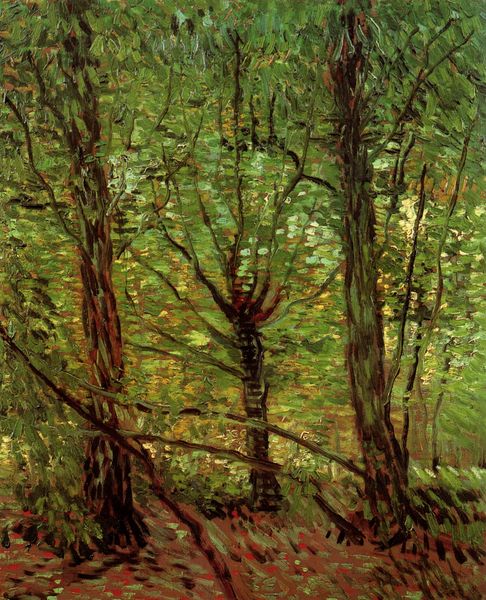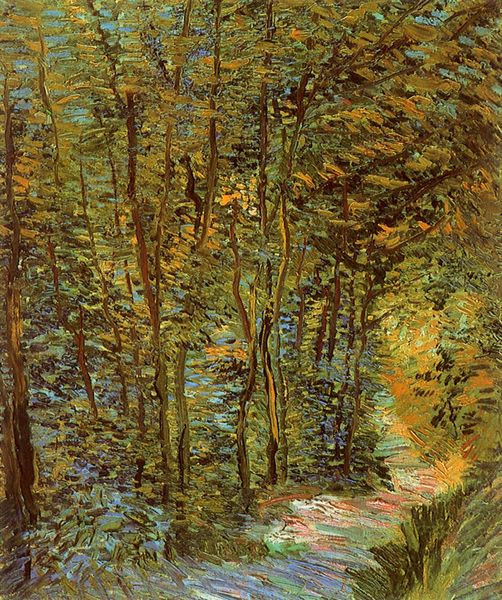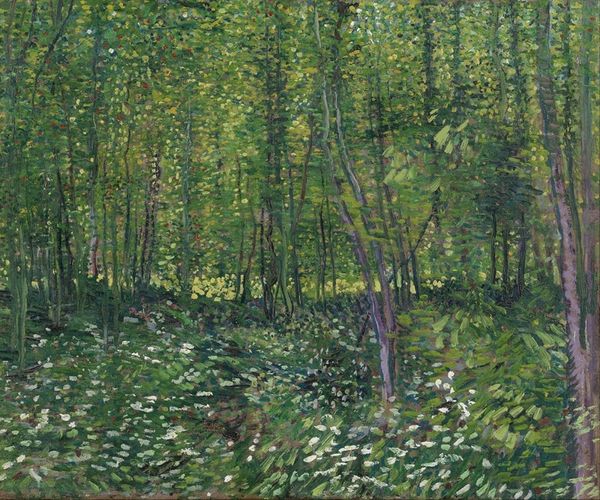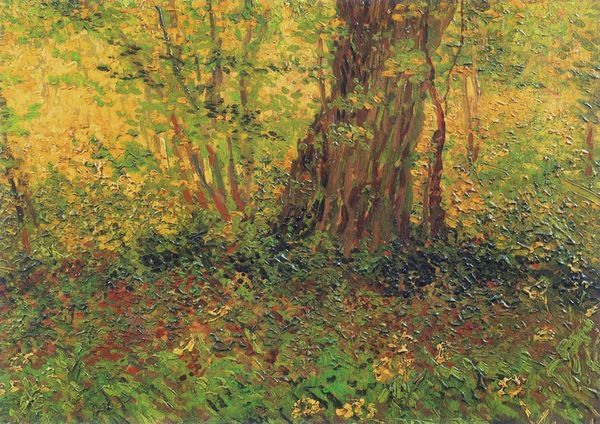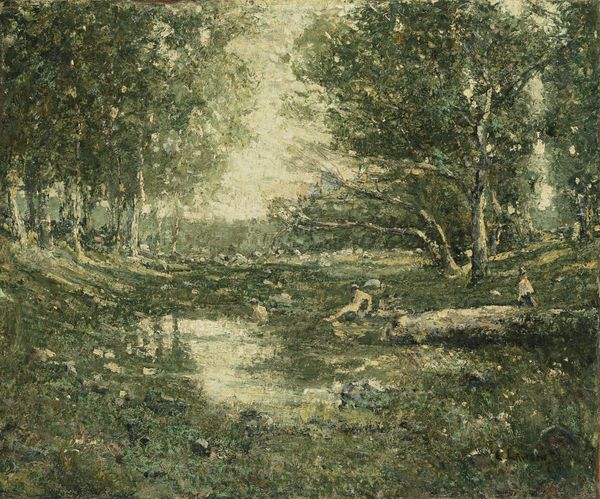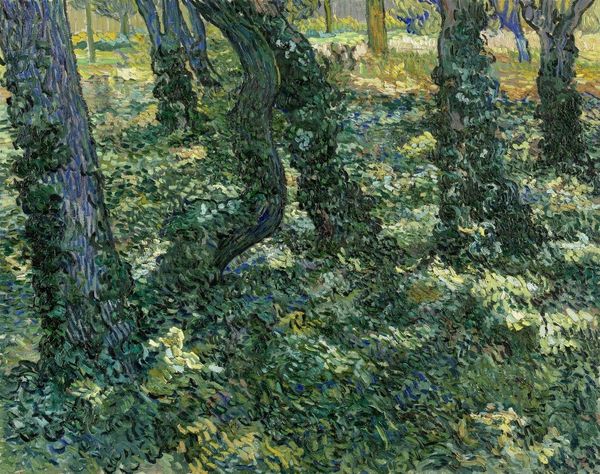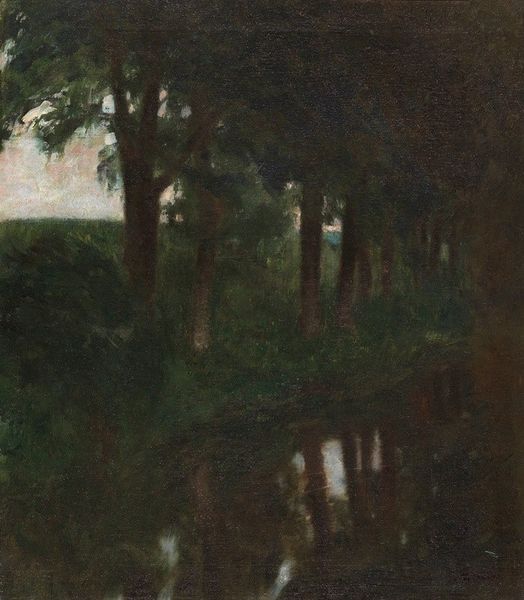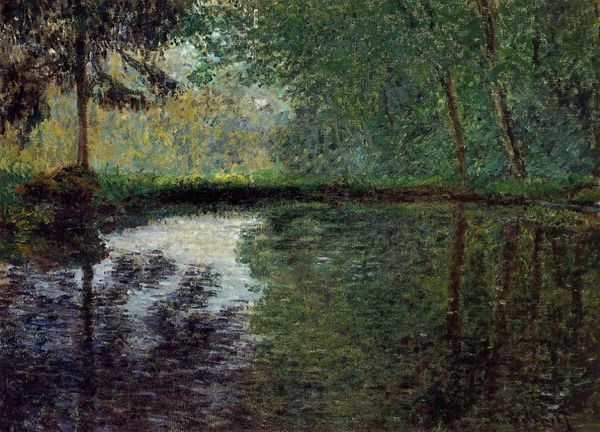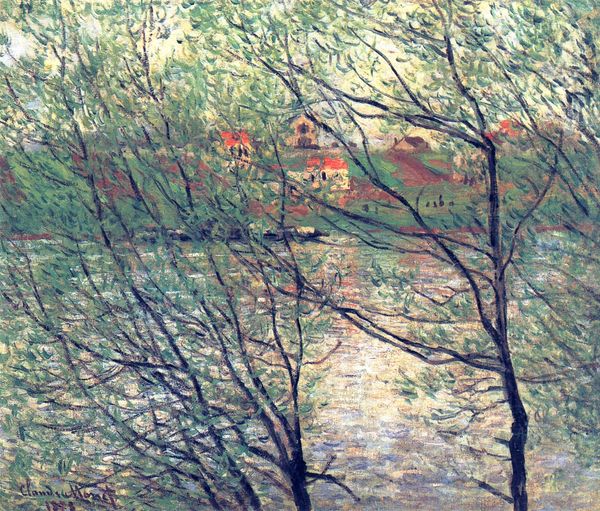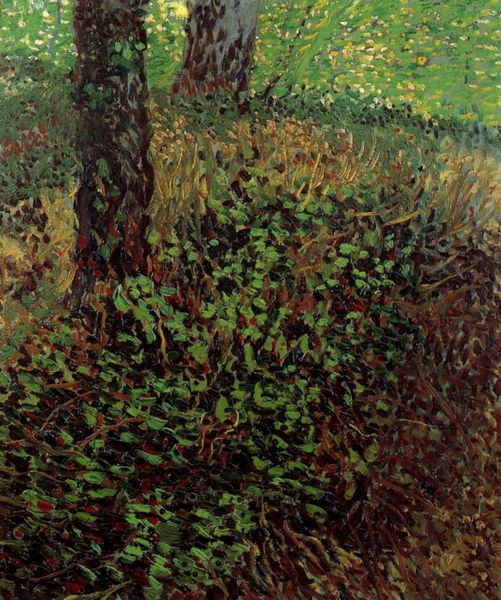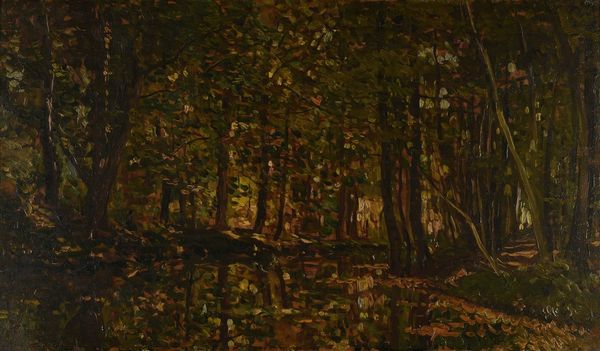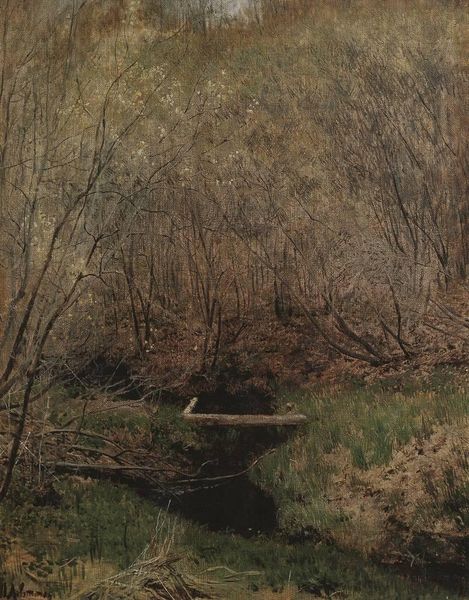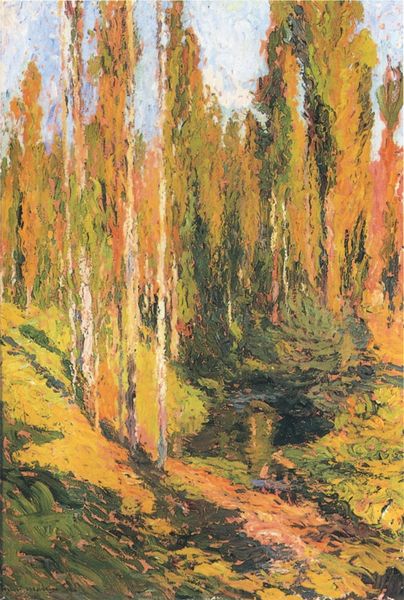
plein-air, oil-paint
#
plein-air
#
oil-paint
#
landscape
#
post-impressionism
Dimensions: 49 x 64 cm
Copyright: Public domain
Curator: Here we have Van Gogh’s "Undergrowth with Ivy," created in 1889, towards the end of his life. It's part of his exploration into landscape and was painted in plein-air, which is so fascinating considering the period and his condition. Editor: It's arresting. My first thought is how visceral it feels. The close-up perspective, the heavy impasto—you're not just seeing undergrowth; you're wading through it. The materials themselves, that thick oil paint, really dictate the reading of the picture. Curator: Absolutely, there is something immersive about it, which can definitely be amplified by its symbolic context: The motif of the undergrowth has ties to hidden places, the subconscious, and nature’s embrace – death even, considering his state of mind at the time. The ivy itself… Editor: …Speaking to that sense of overwhelming, unyielding nature. Considering the means of its production adds another layer to the interpretation. Plein-air painting involved material constraints; the need to quickly capture fleeting light using portable supplies and painting techniques. How much did the medium itself, and these practical issues, play into the reading of this picture, as compared to his mental state at the time? Curator: That's an astute point. While we know about Van Gogh’s tormented state of mind, we can’t overlook how painting outdoors may have shaped the final artwork. It speaks of both urgency and observation; nature's abundance and the need to record it. But doesn't this very combination speak to his mental and emotional landscape? Perhaps there are also psychological implications to these themes in his painting process itself, as he struggled to overcome real challenges and to capture something significant in nature... Editor: Possibly. Though, I also think this risks reducing the work to mere biographical anecdote. I want to stress that examining how these materials themselves shape what's recorded – those quick strokes forced by the elements for example – creates this palpable effect just as much as Van Gogh’s "feelings", to your point. Curator: And yet, can we truly separate the hand that guides the brush from the inner workings of the heart and mind? Van Gogh transformed this ordinary scene into a charged, symbolic space—I feel this goes beyond merely recording surface realities. It captures a feeling… Editor: I agree it has tremendous emotional presence, which may be intensified by our prior understandings and awareness of the materiality and the means used for its production... I guess I appreciate how Van Gogh brings the raw reality and experience of being present within nature into it – maybe there is space for both material understanding and the artist's intent. Curator: A harmonious conclusion indeed!
Comments
No comments
Be the first to comment and join the conversation on the ultimate creative platform.
